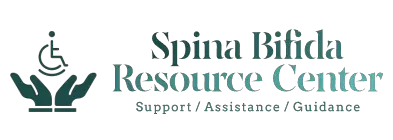14 Common Spina Bifida Myths
The word “spina” conjures up images of a protruding bone and a painful, rigid cord. These are all true about spina bifida. But other things that you think you know about this condition may not always be correct.
Myth 1: Spina bifida can only be diagnosed after birth
In some sense, this is true; however, it is not entirely straightforward. Most times, SB will be diagnosed before birth using ultrasound. But there are instances when one type of spina bifida may go undiagnosed until adulthood, and in some cases, it may never get diagnosed. This is called Spina bifida Occulta [1].
Myth 2: People who have spina bifida cannot have other issues or conditions
There are a number of different conditions that people affected by SB can also have. The condition can be accompanied by:
- anencephaly, which is the absence of the top of the brain
- spinaritoid entrapment disease, which is a degenerative disease of the shoulder and spine)
- myelomeningocele, a condition in which the baby’s back is enclosed in the abdominal wall, causes a partial deformation of the spine. This is usually accompanied by a facial deformity.
- Omphalocele, which is miscarriage of a newborn due to sac contents moving to the Fallopian tube), tardive dyskinesia (a condition in which the muscles controlling speech are abnormal), and others. [2]
Myth 3: People with spina bifida are always mentally impaired
Although many people with SB will have some level of cognitive impairment, this condition is not accompanied by a complete loss of mental capacity. Generally, people with spina bifida have milder degrees of mental impairment than people without the condition [3].
A small percentage of the population with SB have severe mental disabilities (e.g., autism or Alzheimer’s disease). But people with spina bifida don’t always have a “cognitively abnormal” life. As a fact, people with SB are more likely to develop other types of disorders, such as mood and anxiety disorders [3].
The IQ of spina bifida patients is close to the norm for other children of the same age, with the average IQ of spina bifida patients being between 80 and 85. Close to 90 percent have an IQ over 80. Remember, these are averages, with some having IQ scores higher and others lower [4 ].
Myth 4: Children who have spina bifida can’t ever have a good life
There are many people who think that children with SB can never have a “good life” because they will always have some level of mental or physical impairment. This is not the case at all. As we’ve discussed, people with spina bifida are no more likely to have a “good” life than people without the condition [3].
All a child with SB has is a condition that can limit their ability to do certain things. However, with treatment and therapy, there will be lots of other activities they can enjoy.
Many children born with spina bifida never suffer any symptoms or problems. Most people who do experience symptoms are able to walk and live relatively normal lives. They may even grow up to become independent adults depending on the type of SB they are diagnosed with [5].
Life for children with SB does not have to be a future of pain and suffering.
Myth 5: People with spina bifida will not be able to date and get married
Many people are surprised to learn that people with spina bifida can get married. People with SB are not “locked” out of the dating scene. They are not “forbidden” from getting married.
Just like everyone else, people affected by SB are capable of developing intimate feelings for others, and once those feelings are reciprocated, what’s to say they can’t date and eventually marry? [5]
Myth 6: The level of the opening (lesion) will determine how smart they are
There are a number of inaccuracies in this myth. First of all, the concept of “level of the opening” has no basis in science. The opening is the same in all babies. It is the “size” of the opening that varies. Once the neural tube opens, the level of the opening does not determine how smart the individual is [5].
Secondly, the “opening” is not a “lesion.” A “lesion” is a term doctors use to describe a “hole” or “rupture” in the bone. The “opening” is usually covered by a skin “flap” after the surgery to protect the bone and give it a better shape before it is “set” and healed [5].
Myth 7: Infants born with spina bifida do not survive long or are stillborn
The chances that a fetus with SB will be stillborn is 5% or less. As treatment for spina bifida continues to improve, patients with the ailment are reported to be surviving longer [3-4].
Myth 8: Spina bifida claims patients at a young age
It is difficult to determine the expected survival rate, but those born with SB between 1975 and 1979 were studied as recently as 2001 and had survived to ages between 20 and 25.
As the child grows, the spinal cord grows with him or her, and therefore, the conduction system and the ability of the neuromechanics to support the movement of the body become stronger.
This progression is called maturation, and it is a normal, healthy process [3-4].
Stating the precise life expectancy of people with spina bifida is rather challenging because of several factors, primarily the improvements in treatment that are being used to extend their lifespan.
However, evidence suggests that most children diagnosed with SB seem to be living to early adulthood, and some even live longer [3-4].
Myth 9: A spina bifida defect covered by a sac indicates a worse prognosis for the infant
Whether the sac covers the neural tube defect or not, does not affect the infant’s prognosis. SB prognosis is primarily determined by where on the spinal cord the opening starts, as this will indicate what level of paralysis there will be [3].
Myth 10: The lemon sign indicates the baby will have a lemon-shaped head
The lemon sign is a feature when there appears to be an indentation of the frontal bone. While there is no known reason for an infant in its first or second trimester to show up on ultrasound as having a head the shape of a lemon, the reality is the head typically becomes more rounded during the third trimester.
Infants who have been shown to have a lemon-shaped head during prenatal ultrasound born with spina bifida usually do not have a point at the top of their head or on the front [3-4].
Myth 11: Spina bifida is hereditary
Spina Bifida has no clear pattern of being hereditary. It is sporadic and affects 1 out of every 2,000 births in the United States. The majority of reported spina bifida cases are random, with these families having no history of the condition. Also, there is no evidence that suggests having a child with spina bifida increases the risk of having children with SB later on in life [6].
Myth 12: Spina bifida babies look normal at birth
Unless it is spina bifida occulta, most SB babies will appear to have visible abnormalities at birth. Usually, the affected area on the back looks abnormal. You may see a small patch of hair, a birthmark, a dimple, or a pouch-like bulge (sac) [7].
However, if there are no visible signs at birth, they often show subtle signs later on. Babies who are born with spina bifida may have trouble moving their legs, arms, or head.
They may have trouble sitting up, standing, walking, or even breathing without assistance. A baby’s brain and the spine may not fully develop and may cause seizures, paralysis, vision loss, hearing loss, learning disabilities, and developmental delays [7].
Myth 13: Spina bifida is contagious
Spina Bifida is in no way contagious. It is a birth defect that happens after conception [5].
Myth 14: Women with spina bifida cannot get pregnant
It is possible for women affected by Spina Bifida to get pregnant since their fertility is typically not impeded. However, hormonal contraception can prove more difficult to perform due to an increased risk of thrombosis in paraplegia [8].
References
- CDC. (2020, September 1). What is Spina Bifida? Centers for Disease Control and Prevention. https://www.cdc.gov/ncbddd/spinabifida/facts
- Are there disorders or conditions associated with spina bifida? (2022, January 18). Https://Www.nichd.nih.gov/. https://www.nichd.nih.gov/health/topics/spinabifida/conditioninfo/disorders-conditions
- A Guide for Medical Professionals : About Spina Bifida : Spina Bifida Association of Kentucky, Inc. (2022). Spinabifidakentucky.org. https://spinabifidakentucky.org/about-spina-bifida/a-guide-for-medical-professionals
- Myths. (2022). Spina Bifida Resource Center. https://www.spinabifida.net/myths/
- Lohr, C. (2012, October 5). Spina Bifida Awareness Month. HuffPost; HuffPost. https://www.huffpost.com/entry/spina-bifida_b_1941973
- Spina bifida: MedlinePlus Genetics. (2013). Medlineplus.gov. https://medlineplus.gov/genetics/condition/spina-bifida/#inheritance
- Spina Bifida in Children | Cedars-Sinai. (2022). Cedars-Sinai.org. https://www.cedars-sinai.org/health-library/diseases-and-conditions—pediatrics/s/spina-bifida-in-children.html
- Cremer, R., Hofmann, N., & Wolff, F. (2009). Pregnancy and labour in women with spina bifida. Cerebrospinal Fluid Research, 6(Suppl 2), S5. https://doi.org/10.1186/1743-8454-6-S2-S5



